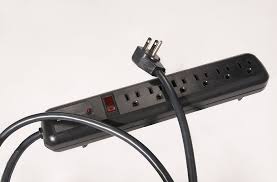Surge Protectors For Dallas Homeowners
Many homeowners believe that adequate surge protection begins and ends with plugging their computer into a power strip. Unfortunately, that’s seldom the case. First of all, not all surge protectors live up to their name; some are little more than glorified extension cords. Second, a surge will follow any wire into a house — phone and cable lines included — and threaten fax and answering machines, televisions, satellite systems, computers, and modems.
This video shows How a Surge Protector Works.
How Surge Protectors Work
Many homeowners believe that adequate surge protection begins and ends with plugging their computer into a power strip. Unfortunately, that’s seldom the case. First of all, not all surge protectors live up to their name; some are little more than glorified extension cords. Second, a surge will follow any wire into a house — phone and cable lines included — and threaten fax and answering machines, televisions, satellite systems, computers, and modems. And third, as the owners in the Acton remodel discovered, delicate electronic circuitry has pro-liferated throughout our homes, leaving common appliances as vulnerable as computers to the effects of surges.
When you put together a computer system, one piece of standard equipment you’ll probably buy is a surge protector. Most designs serve one immediately obvious function — they let you plug multiple components into one power outlet. With all of the different components that make up a computer system, this is definitely a useful device.
But the other function of a surge protector power strip — protecting the electronics in your computer from surges in power — is far more important. In this article, we’ll look at surge protectors, also called surge suppressors, to find out what they do, when you need them, and how well they work. We’ll also find out what levels of protection are available and see why you might not have all the protection you need, even if you do use a quality surge protector.
The main job of a surge protector system is to protect electronic devices from “surges.” So if you’re wondering what a surge protector does, the first question is, “What are surges?” And then, “Why do electronics need to be protected from them?”
A power surge, or transient voltage, is an increase in voltage significantly above the designated level in a flow of electricity. In normal household and office wiring in the United States, the standard voltage is 120 volts. If the voltage rises above 120 volts, there is a problem, and a surge protector helps to prevent that problem from destroying your computer.
To understand the problem, it is helpful to understand something about voltage. Voltage is a measure of a difference in electric potential energy. Electric current travels from point to point because there is a greater electric potential energy on one end of the wire than there is on the other end. This is the same sort of principle that makes water under pressure flow out of a hose — higher pressure on one end of the hose pushes water toward an area of lower pressure. You can think of voltage as a measure of electrical pressure.
Importance Of Having A Surge Protection
So what causes an electrical surge? Most people think that the main culprit of electrical surging is lightning, but that’s not true at all. Yes, lightning can and does cause electrical surges, but the voltage of lightning is so great that most surge protectors won’t be able to withstand their power. During a lightning storm, the only way to be absolutely sure that your devices won’t surge is to unplug them. Call (214) 238-8353 us for your home service and repair needs.
For more related articles and info visit https://www.berkeys.com/category/electrical/
